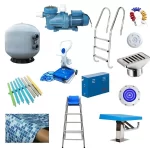# QSFP28 Passive Cable Overview and Applications
## Introduction to QSFP28 Passive Cables
QSFP28 passive cables are high-speed interconnect solutions designed for data center and high-performance computing applications. These cables utilize the Quad Small Form-factor Pluggable (QSFP) form factor with 28 Gbps per lane capability, making them ideal for 100G Ethernet and InfiniBand EDR implementations.
## Key Features of QSFP28 Passive Cables
Passive QSFP28 cables offer several distinct advantages:
- Cost-effective solution compared to active optical cables
- Low power consumption as they don’t require signal conditioning
- High reliability with no active components to fail
- Plug-and-play installation with no configuration needed
- Available in various lengths (typically 1m to 5m)
Technical Specifications
The QSFP28 passive cable assembly consists of four shielded twinaxial copper pairs, each supporting data rates up to 28 Gbps. The connector interfaces comply with QSFP28 MSA specifications, ensuring compatibility with standard QSFP28 ports.
| Parameter | Specification |
|---|---|
| Data Rate | 4x28G NRZ (100G total) |
| Protocol Support | 100GbE, InfiniBand EDR, Fibre Channel |
| Maximum Length | 5 meters (depending on quality) |
| Power Consumption | <1W (passive operation) |
Applications of QSFP28 Passive Cables
Data Center Interconnects
QSFP28 passive cables are widely used for top-of-rack (ToR) to leaf switch connections in modern data centers, providing cost-effective 100G connectivity over short distances.
High-Performance Computing
In HPC environments, these cables enable high-bandwidth, low-latency connections between compute nodes and storage systems.
Network Equipment Interconnects
Network equipment manufacturers use QSFP28 passive cables for intra-chassis and inter-chassis connections in high-density switching platforms.
Advantages Over Active Solutions
While active optical cables (AOCs) and active copper cables offer longer reach, QSFP28 passive cables provide significant benefits for short-reach applications:
- Lower cost per port
- Reduced power consumption
- Simpler design with no signal retiming
- Higher reliability due to fewer components
Considerations for Deployment
When deploying QSFP28 passive cables, consider the following factors:
- Cable length limitations (signal integrity degrades beyond 5m)
- Bend radius requirements to maintain performance
- Thermal management in high-density installations
- Compatibility with specific switch and NIC models
Future Outlook
As data rates continue to increase, the demand for cost-effective interconnect solutions like Q
Keyword: qsfp28 passive cable
